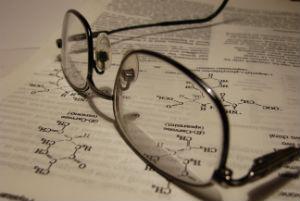 We continue with the analysis of some basic concepts about design and success stories that relate to how our industry can take advantage of the development of its own technologies.
We continue with the analysis of some basic concepts about design and success stories that relate to how our industry can take advantage of the development of its own technologies.
by: M.Sc. Ph.D. Julián A. Restrepo R.*
In the first part of this article we talk about some important concepts of design in general, in order to identify tools applicable to the paints and coatings industry, which concluded with the position of "Reverse Engineering", a term that we continue to develop in this second part.
Design motivated by human nature
It is said that a "Reverse Engineering" process leads to greater advantages than a simple copying process: "Reverse Engineering" can lead to new ideas, greater understanding of a product/process and in general, due to the very nature of the human being, the resulting product will always be better than the initial model. This is basically due to the fact that the human being is particularly critical of the defects and shortcomings of others (although not his own), and at all times will try to find a better solution to that proposed by the product / process of his rival or competitor.
In the field of sport, think for example of the football rivalry between the Spanish teams Barcelona and Real Madrid [12a], which has made both teams have to try their best to get the victory over their rival, which has made them win multiple titles in recent years.
On the tennis field, there is the rivalry between Roger Federer vs. Rafael Nadal, since from 2004 to 2010 only one of the two was number one in the world. Thus developed a brilliant rivalry where although the Swiss was the undisputed king of tennis for at least four years, his stone in the shoe was always the Spanish, until the left-hander managed to overcome it.
In the commercial field, the rivalry between Apple vs. Samsung, Hotmail vs. Yahoo, Yahoo vs. Yahoo is well known. Google (the war of search engines on the Internet), Coca-Cola vs. Pepsi (the war of the tails), Nike vs. Adidas, McDonalds vs. Burger King, MasterCard vs. Visa (the war of The Cards), among others [12b].
In the scientific field, we can review the Fifth Solvay1 Congress, held in October 1927 (see Figure 2). The Solvay Congresses brought together the greatest scientists of the time, allowing very important advances in the field of physics [12c]. At the Fifth Conference, the world's best physicists discussed the newly formulated quantum theory, built a new way of understanding the world and realized that in order to describe and understand nature, much of the preconceived ideas of the human being throughout its history had to be abandoned and even more, overcome their own conceptual and scientific differences. Historically creating one of the most prosperous periods for the advancement of physics and being a golden generation of science, possibly as there has been no other in history. Seventeen of the twenty-nine attendees were or became Nobel Prize winners.
Serendipity
Serendipity is an English word that means to discover things by chance in a fortunate way. Its origin lies in the work of the Venetian writer Tramezzino, "Pilgrimage of the three young sons of the king of Serendip", a traditional Persian tale (Serendip was the ancient name of Ceylon, now called Sri Lanka). The three princes on their travels always made discoveries by accident or sagacity [13a].
A serendipity is a lucky and unexpected discovery or finding that occurs when you are looking for something else. It can also refer to a subject's ability to recognize that he has made an important discovery even though it has no relation to what he is looking for. In more general terms, this can also be called chance, coincidence or accident. Serendipities are common in the history of science and technology. Let's review some examples [13b]:
- In the mid-nineteenth century, an attempt was made to find a material to replace ivory. In 1870, John Wesley Hyatt, an inventor from New Jersey, was pressing a mixture of sawdust and paper with glue, because he believed that this would get the new material. But he cut off a finger, and went to his medicine cabinet. Unintentionally, he overturned a bottle of collodion (cellulose nitrate dissolved in ether and alcohol). This caused a layer of nitrocellulose to remain on its shelf. Upon seeing it, Hyatt realized that this compound would better tie its mix of sawdust and paper together, rather than the tail. In this way celluloid was invented.
- Chemist Friedrich Kekulé had long been trying to find the elusive structure of the benzene molecule. Simply, a six-carbon structure that had the chemical properties it exhibited was not known. According to his own account in his memoirs, one afternoon, while returning home by bus, he fell asleep. He began to dream of atoms dancing and colliding with each other. Several atoms came together, forming a snake that made those. Suddenly, the snake bit its tail and Kekulé woke up. It had not occurred to anyone until that moment that it could be a cyclical compound.
- Polytetrafluorethylene (better known by its trade name Teflon®) was discovered in 1938, while Dr. Roy J. Plunkett was working on the development of refrigerants and due to a malfunction of one of his devices during his experiments, he made the finding.
Synethics
The word Synectic is a Neologism with a Greek root (synecticos), which means the union of unrelated elements. It began to form part of the vocabulary of creativity specialists, when the book Synectics was published in 1961 [14a]. Its objective is to increase the chances of success in solving problems or creating new products, being a creative method (strictly speaking, a set of methods to generate creative ideas), which is based on the simplification of the problem (rounding), by building concrete answers through the union of seemingly irrelevant elements. Thus, to solve the problem, instead of attacking it head-on, that problem or situation is compared to something else. Therefore, analogies and metaphors become some tools of a method that, if performed in a group, needs to be structured and organized by a moderator to culminate successfully.
Synectics, devised by W. Gordon and G. Prince, confronts us with the psychological processes underlying rational thought and therefore tries to delve into the most creative solutions and far from the usual. In this way, it is based on forgetting the known and finding what is strange to us [14b].
Final comments
Various elements currently surround the market environment and the development of paints and coatings, being perhaps some of the most important: globalization, climate change, environmental regulations, the massive use of the Internet and social networks, the search for alternative energies and renewable resources, the interest in travel and space exploration, nanotechnology, etc.
All these elements exert an increasingly strong pressure on paint companies, and also, the consumer looks for products that have a better cost/ benefit ratio, since he is increasingly better informed and therefore successful Marketing and Advertising processes become increasingly difficult. Added to this is the fact that more and more, these companies consider more financial elements and indicators to measure the balance of their efforts to increase the competitiveness of their companies in relation to their competitors.
In short, if they want to stay, paint companies must become increasingly creative and adopt different tools that allow them to satisfy, at a lower cost and in a shorter time, the requirements of their customers. An important part of this is also technological platforms, which can allow several companies, in the same market, to cooperate with each other to maximize their profits (according to the "Nash Equilibrium").
Thus, in addition to being creative for product development, paint companies should be creative in the approach of their strategies, and in the way they relate to their competitors.
Finally, we can analyze Carl Sagan's phrase: "After all, when you're in love, you want to tell everyone. That is why the idea that scientists do not speak publicly about science seems aberrant to me"[15]. This same idea can be applied to our paint companies.
Footer
4. Also called Solvay Conferences on Physics, being a series of scientific conferences.
References
[12] (a) http://departments.knox.edu/barcelona/3_Nos_interesa_2.html; b) http://listas.20minutos.es/lista/rivalidades-de-marcas-las-guerras-de-los-gigantes-de-la-industria-263645; (c) http://es.wikipedia.org/wiki/Congreso_Solvay
[13] a) Fernández R., Andrés. "Creativity and Innovation in companies and organizations". Ed. Diaz de Santos, S.A., Spain, 2005; (b) http://es.wikipedia.org/wiki/Serendipia]
[14] (a) http://www.rinconpsicologia.com/2011/07/que-es-la-sinectica.html; (b) http://blog.sage.es/economia-empresa/organiza-una-sesion-de-sinectica-en-ocho-pasos] [http://www.neuronilla.com/desarrolla-tu-creatividad/tecnicas-de-creatividad/86-analogias]
[15] http://akifrases.com/frase/128744
[16] Visit the PPG Protective & Marine Coatings company page: www.ppgpmc.com
* M.Sc. Ph.D. Julián A. Restrepo R. PMC Technical Manager of PPG Industries Colombia. [email protected]


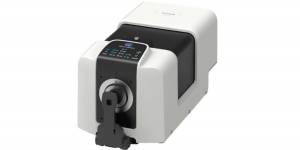
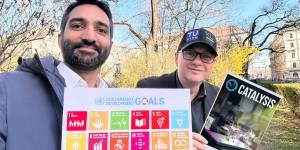




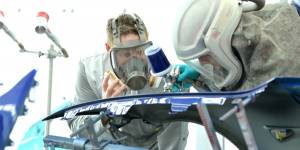
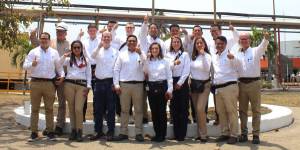














Leave your comment